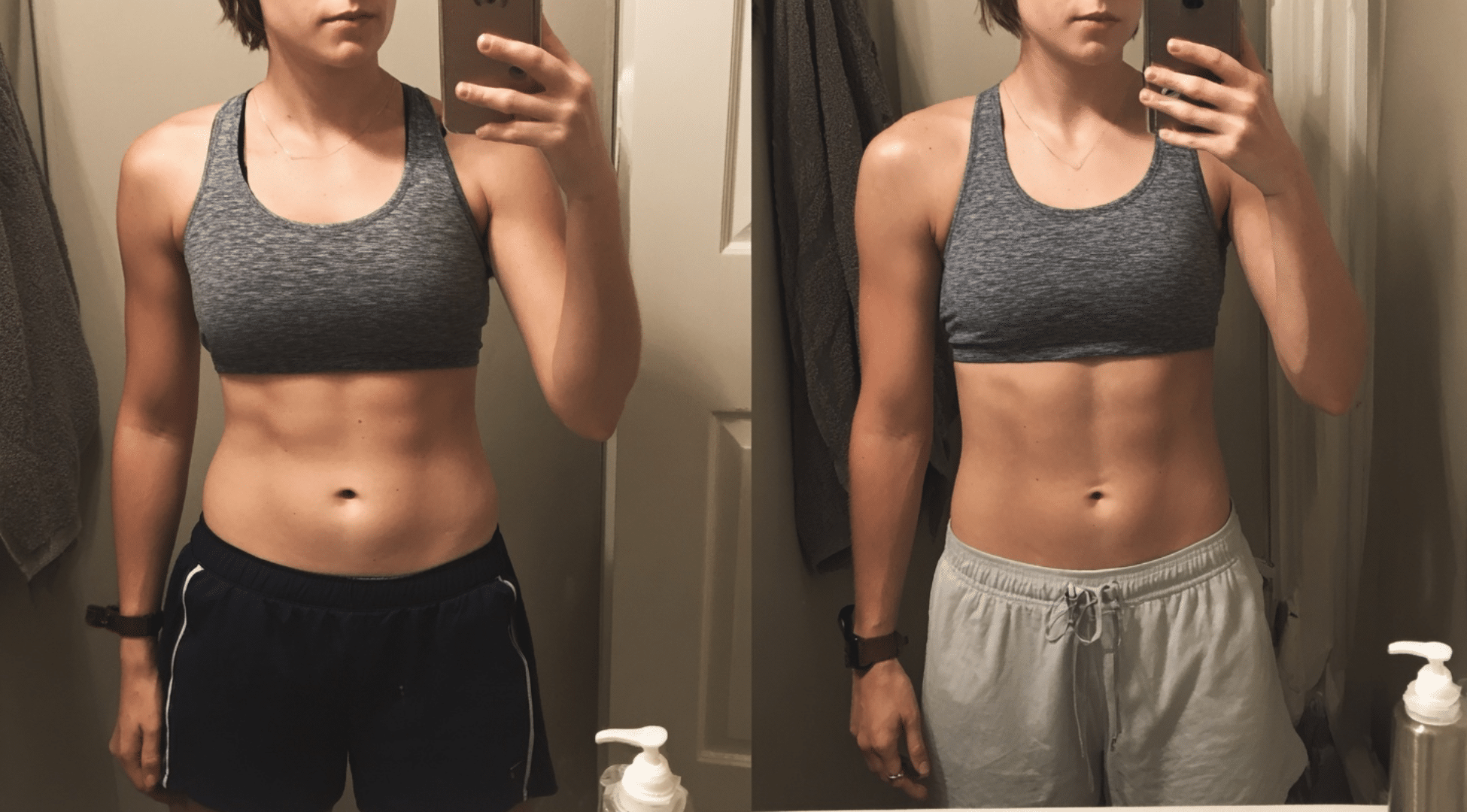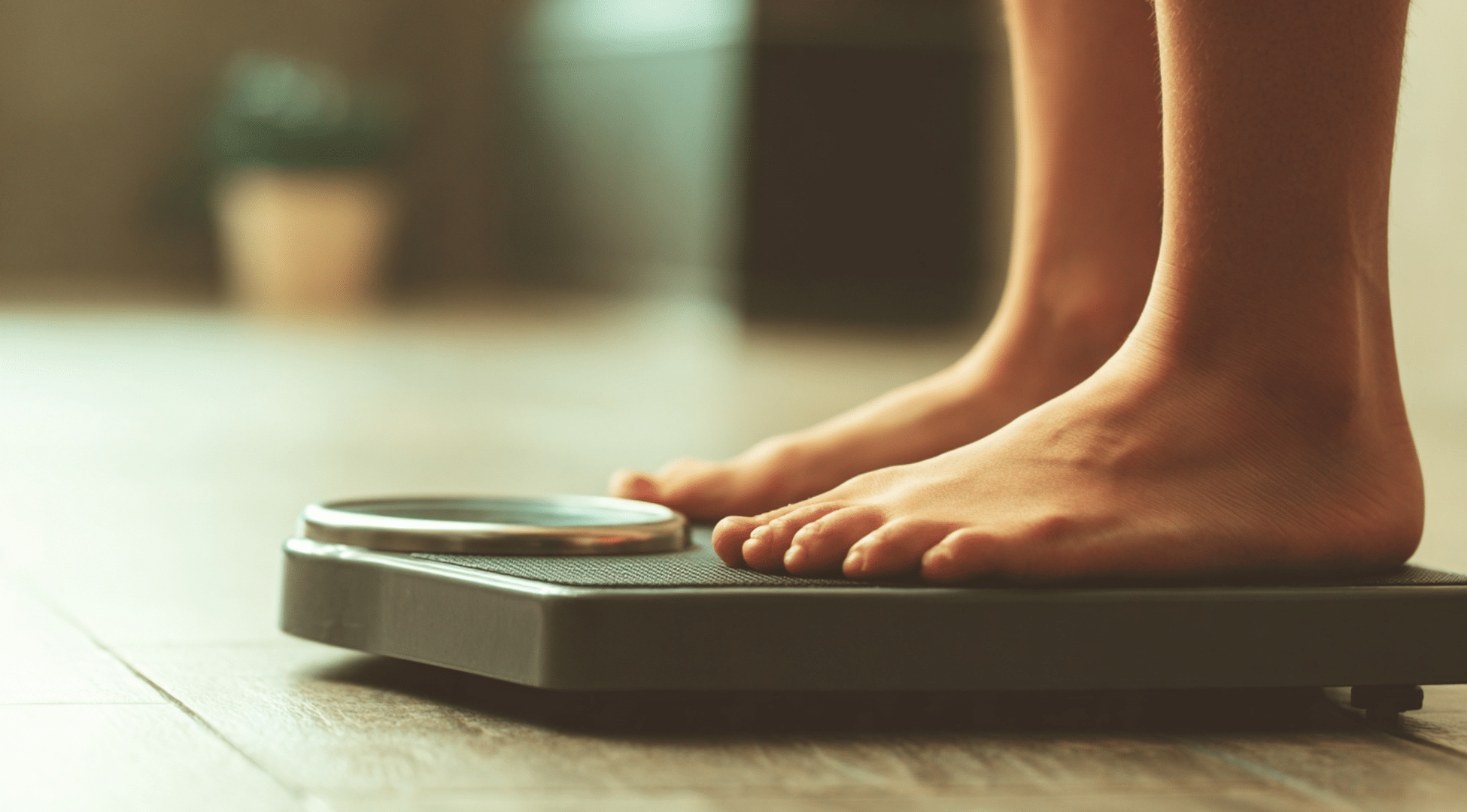I started working out and eating better. At first, I didn’t notice much. But then, my shirts fit tighter in the arms and looser in the waist. I felt stronger and had more energy. The scale didn’t change a lot, but I looked different.
I knew I was seeing signs of gaining muscle and losing fat. My sleep got better too, and I wasn’t sore as often.
Now it’s your turn to look for signs of gaining muscle and losing fat. Are your clothes fitting differently? Do you feel stronger during your workouts? Is your body feeling firmer?
If yes, you’re on the right path. Don’t just trust the scale, look at how you feel and how your body moves.
What is Body Recomposition?
Body recomposition means building muscle and losing fat at the same time. Instead of just trying to get bigger or only lose weight, you’re doing both. This helps you look leaner, feel stronger, and stay healthy.
It’s different from the usual bulking and cutting. In bulking, you eat more to gain weight, then cut later to lose fat. With body recomposition, you don’t need to go through those two phases. You can slowly change your body while keeping your weight more steady.
This works best for beginners, people returning to training, or those who are overweight. Your body responds quickly when you’re starting out or coming back. It’s also great if you want a balanced and steady change without extreme diets.
Clear Signs of Gaining Muscle and Losing Fat in Your Body

You might not always see changes on the scale, but your body gives you clues. Here are some clear signs that show you’re gaining muscle and losing fat, even if it’s happening slowly.
1. Your Clothes Fit Differently
You might notice your pants feel looser around the waist but tighter around your thighs or glutes. Shirts may fit snug on your arms or chest.
This means fat is going down and muscle is building up. These changes are real signs your body is shifting for the better.
2. You Feel Stronger During Workouts
Lifting heavier weights or doing more reps is a big sign. If exercises that once felt hard now feel easier, your strength is growing.
This usually means the muscle is increasing. Stronger workouts show progress even if the scale doesn’t move. Pay attention to how much more you can do over time.
3. The Scale isn’t Moving Much, But You Look Better
Sometimes your weight stays the same, but your body looks tighter or more shaped. That’s because muscle weighs more than fat.
So even if the number doesn’t drop, your body is still changing. Use photos or the mirror to track progress, not just the scale. This shows real body recomposition.
4. You Have More Energy and Less Fatigue
If you’re feeling more awake, lasting longer during workouts, and not crashing midday, your body is improving. Muscle helps burn more calories, even at rest.
Losing fat also helps your body work better. More energy is a sign that your inside health is improving, along with how you look.
5. Your Body Feels Firmer and Tighter
When you touch your arms, legs, or stomach and they feel firmer than before, it means muscle is building under the skin and fat is reducing.
The softness fades, and your body feels more solid. This is a clear physical sign that you’re gaining muscle and losing fat over time.
How Hormones Affect the Signs of Gaining Muscle in Females
Hormones play a big role in how females build muscle and lose fat. Estrogen helps protect muscles and supports recovery, while progesterone can affect energy and water balance. These hormones shift during the menstrual cycle, which can change how strong or tired you feel.
Testosterone, though lower in females, still supports muscle growth. Because of these hormone levels, progress might feel slower, but it’s still real.
You may also notice changes in strength, mood, or bloating across the month. That’s normal and part of how your body works.
Tracking your cycle and workouts can help you understand your own pattern. This helps you stay patient and see signs of progress clearly, even when the scale or energy changes.
How to Tell If It’s Muscle or Fat?
Not all weight gain is bad. If you’re getting heavier but feel stronger and look firmer, it’s likely muscle. Muscle is dense, so it takes up less space than fat. That’s why you can weigh more but look smaller.
Fat is softer and takes up more space. It often shows in areas like the belly, thighs, or arms. Muscle feels firm and adds shape, not jiggle.
If you notice better posture, more strength in workouts, or firmer muscles when you flex or touch, it’s probably muscle. Also, if your clothes fit better, especially around the waist and shoulders, that’s a sign.
Use a mix of the mirror, strength levels, and how your clothes feel to tell the difference.
Why the Scale Can Be Misleading?

When you’re gaining muscle and losing fat at the same time, the scale can confuse you. You might think nothing is changing because your weight stays the same. But that’s not true. Muscle is heavier and denser than fat, so even small gains in muscle can balance out fat loss on the scale.
Here’s a simple comparison to help you understand:
| Muscle | Fat |
|---|---|
| Takes up less space | Takes up more space |
| Feels firm and solid | Feels soft and loose |
| Boosts your metabolism | Slows down metabolism |
| Helps shape the body | Hides muscle definition |
During body recomposition, you may hit weight plateaus. But your clothes might fit better, your body looks more toned, and your strength is going up. That’s why visual signs and how strong you feel are better ways to track your progress than just trusting the scale.
Metabolic and Mood Shifts That Show Progress
Changes in your body aren’t just about looks. Your mind and energy also give signs that you’re gaining muscle and losing fat.
You may notice higher energy levels during the day. Tasks feel easier. You don’t crash in the afternoon like before. That’s because muscle boosts your metabolism, helping your body use energy better.
You might also have better focus and mood. Regular exercise and balanced eating support your brain. You feel calmer, less stressed, and more alert. This is your body working well inside and out.
Another sign is fewer cravings and more restful sleep. When your body gets the nutrients it needs, you stop reaching for junk food. You also fall asleep faster and wake up feeling ready for the day.
These small changes in how you feel are real signs your health is improving, even if you don’t see it right away.
Body Measurement and Tracking Tools

Keeping track of your progress isn’t just about stepping on the scale. To really see how your body is changing, you need to use tools that show more than just your weight. Here are a few ways to measure your results more clearly:
1. Weight Fluctuations; Why the Scale Might Lie: The number on the scale can go up or down for many reasons: water, food, sleep, or even stress. It doesn’t always show fat loss or muscle gain. That’s why relying only on the scale can be confusing. It’s just one tool, and it doesn’t tell the whole story of your progress.
2. Tape Measurements vs. Smart Scales: Tape measurements are simple and cheap. You can use them to check your waist, hips, arms, and legs. They show real size changes. Smart scales may give body fat readings, but they can be off sometimes. Using a tape and checking how your clothes fit often gives better, clearer results.
3. Body Fat Percentage Tools: If you want to measure fat more closely, tools like DEXA scans, skinfold calipers, or tracking apps can help. DEXA is the most accurate but costly. Calipers are cheaper and can be used at home. Some apps estimate body fat using photos, but results can vary. Use the same tool regularly.
Mistakes That Hide Signs of Progress
Sometimes, the work you’re putting in is working, but the signs get covered up by small mistakes. These common habits can make it hard to notice how much progress you’re actually making.
- Pushing too hard without enough rest (overtraining)
- Eating too little, which slows your metabolism
- Obsessing over the number on the scale
- Skipping strength tracking (like reps or weights lifted)
- Not taking progress photos or body measurements
- Ignoring how your clothes fit or how you feel
- Comparing yourself to others instead of your past self
Fixing these small things helps you see the real changes happening. Stay consistent, track better, and give your body time to respond; it’s working, even if it’s not always obvious.
Conclusion
I’ve learned that the signs of gaining muscle and losing fat aren’t always clear at first. I used to only watch the scale, but now I notice changes in how my clothes fit, how strong I feel, and how much more energy I have. These small wins keep me going.
Now it’s your turn. Look at your own progress with fresh eyes. Don’t let the scale be the only thing you check. Focus on how you feel, how you move, and what your body is doing.
Keep tracking, keep showing up, and stay patient.
If this helped you, keep learning. Check out the other blogs for more real, simple tips to stay on track.





